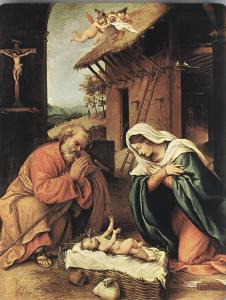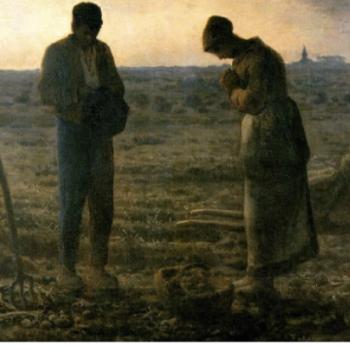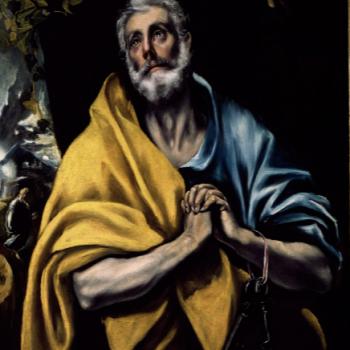
Nativity of Jesus
Sourced by Wikimedia Commons
Analyzing Religious Art Series: A Deeper Exploration
In this ongoing series for An Exhibition Of Art History, I am going to be analyzing famous works of religious art. The focus will be religious symbolism, the history of the piece, biblical history and reference and my personal interpretation of the piece. I hope you enjoy this series as it will take on a wide variety of artistic expressions and spiritual avenues. Each article will represent one piece to keep a clean and deep understanding of it’s history and message. My first article explored the famous work of Rembrandt, The Return Of the Prodigal Son.
The second article of the series focused on The Calling of Saint Matthew by Caravaggio. You may follow this link to read more. The Virgin in Prayer by Giovanni Battista Salvi da Sassoferrato was the following subject. The Annunciation by the African-American painter Henry Ossawa Tanner and The Tears of Saint Peter (El Greco, Mexico City) by El Greco was the last two articles. The Angelus by French painter Jean-François Millet was our sixth piece for our series.
Today we will be exploring the nativity scene with one such piece entitled Adoration of the Christ Child(Lotto, Washington).
A foreshadowing of the future for salvation
What I find most interesting about Lotto’s piece is his inclusion of many different types of religious details and symbolism. I have researched many artistic interpretations of the Nativity Scene, but this one in particular stuck out to me. The halos that are perched atop of Mary and Joseph was a heavenly symbol that intrigued me at first. It was the crucifix that was included in the scene that truly made me curious.
A writing colleague and friend of mine, Lisa Lachapelle, (here is another link to her writing and works, please check her out today) had this to say in regard to that point:
“Early Renaissance, which was Lonzo’s period in which he lived in were more Naturalists. The major themes of art were Naturalist and Humanist, in the search for higher intellectual reasoning. I think we must be careful in applying symbolic meaning where there is none, or might not be any. I am no expert on Renaissance art but I don’t believe they included objects symbolically as conceptual constructs to consider. They would be included as part of the theme and natural to the composition. The realistic representation of the figures in Lonzo’s piece gives the natural point of view as if he was trying to capture that. In those times and in current day it was not uncommon to have live nativities where living people posed the parts of the Nativity for people to view. To me, it looks as if the setting is inside the doorway and that’s what we are viewing. The archway extends to the wall of the church and the lighting seems indoor, not the same as the outdoor lighting peeking through the doorway in the distance. Using a clever angle to include some such subject matter, but of what was already there, which appears to me done in this work would be the crucifix, there as a reminder of what would be. To say it’s included to symbolically represent the foreshadowing of his death might be or could be an afterthought of the viewer however I don’t think so. I believe it’s part of the piece overall and the crucifix was there on the stand and the painting was done inside the church. The wall frames the whole scene depicted but also there is a foreground and background. I love everything about this piece of artwork, even how he signed it, L. Lotus.”
I agree with Lisa on the point of the crucifix being a foreshadowing of Jesus Christ’s future and his demise. I find it an interesting and unique addition to a beautiful piece.
The two halos over Mary and Joseph indicates holy or sacred figures, and creates an aura of calm and peace. The cherubic angels above the scene itself are holding what looks like a long piece of parchment with unidentified lettering.
If we take a look at Luke 1:35, it relays a message of the divine birth:
“The angel answered and said to her, “The Holy Spirit will come upon you, and the power of the Most High will overshadow you; and for that reason the holy Child shall be called the Son of God.”
This Scripture from Matthew 1:21 also refers to Jesus Christ and the deeper meaning behind his birth:
“She will bear a Son; and you shall call His name Jesus, for He will save His people from their sins.”
Private Devotion, Sainthood and its merit
Adoration of the Christ Child is an oil-on-panel painting created in 1523 for private devotion. It’s current location is in the National Gallery of Art in Washington. It had been previously owned in the 20th century by Count Morlani’s in a private collection in Bergamo.
According to Artibus et historiae, there is a definite link of religious symbolism with the details of the way Lotto portrays the key figures of Mary and Joseph:
Deprived of a precise symbolic meaning, this holder constitutes an ideal linking element between the figure of St. Joseph, the carpenter whose handiwork it evidently is, and the painter Lotto who put his own signature on it. Lotto’s interest in Joseph, which remained constant throughout his career, is connected with the cult of the saint that developed in Italy at the beginning of the sixteenth century, particularly in Bergamo, the city in which Lotto lived for twelve years, painting the Adoration of the Christ Child there in 1523. The signature on the piece of wood is, moreover, an allusion to the skills and tools of the artist’s craft.
Final Thoughts
I find overall the spirit of private devotion is nowadays lost to the demands of social media, technology and his we view outside worship in general. I personally find Lotto’s piece an outstanding balance of biblical symbolism, history and artistic merit. I was entranced by the small details of the delicate halos, the placement of the crucifix and the way Lotto wanted to represent Mary and Joseph in juxtaposition to the Christ child. I find that the act of private devotion and worship through scripture and art to be a very private matter, but it is something we should try to do often, and with an open mind and heart.














